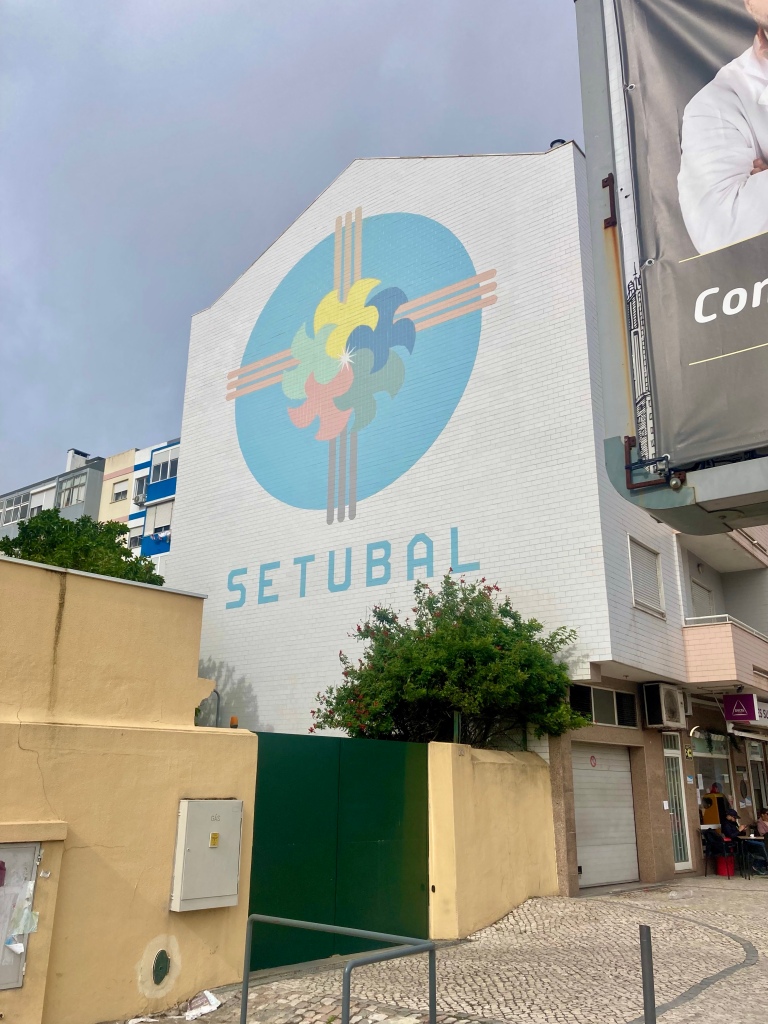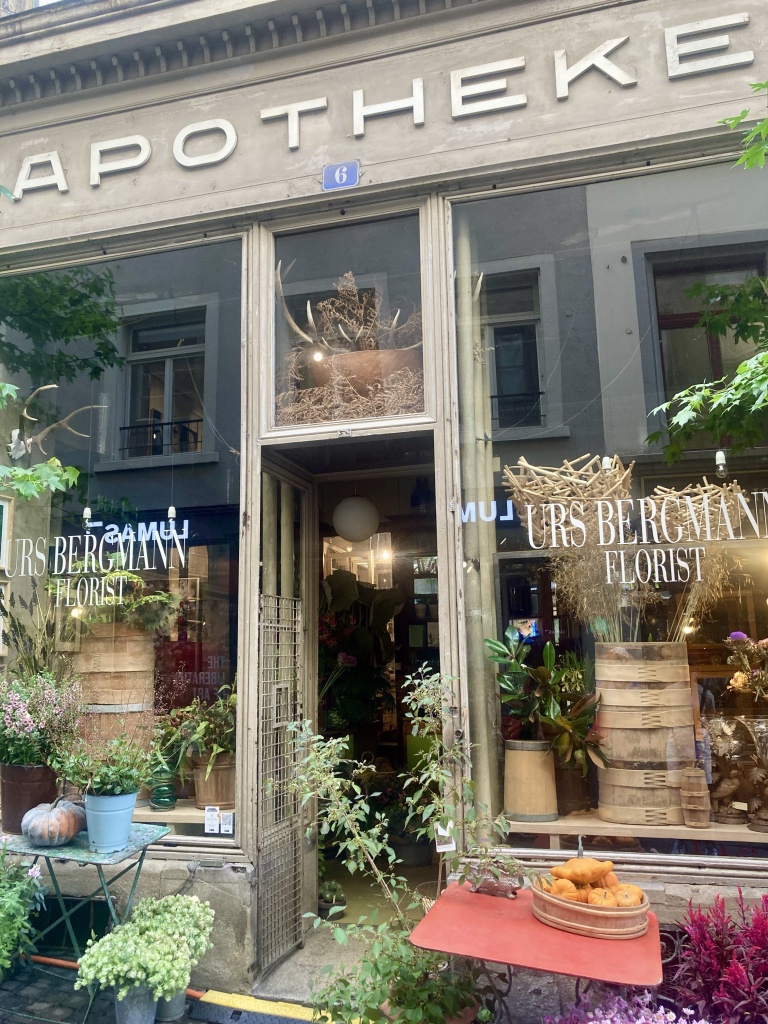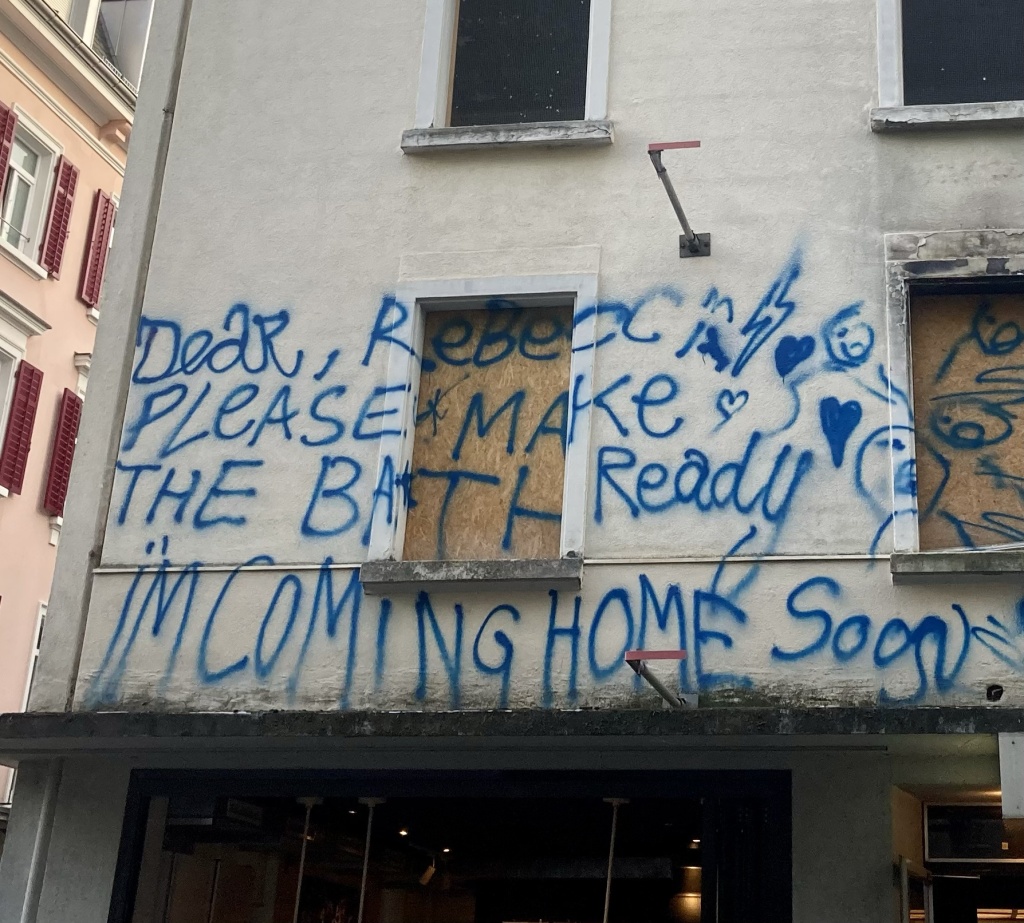
As regular visitors to Lisbon we now know the city quite well, but have tended to stick to certain favourites for day trips, in particular the seaside resort of Cascais which is always enjoyable. On our latest visit we decided to do something different and take the train to Setúbal, a small port city to the south and which is famous for the natural beauty of the nearby coastline, seafood, Moscatel wine and being the birthplace of football manager José Mourinho.
We were staying in our normal area to the north of central Lisbon, which is very handy both for the Metro and also Roma-Areeiro railway station. On arrival at the airport we had bought a Viva Viagem reloadable ticket, which costs a nominal fee of 50 cents and can then be loaded with credit that is valid on nearly all public transport throughout the city (including the Metro, buses, most trams, trains and ferries). Each time you “zap” the ticket when entering a Metro station or bus the relevant fare is deducted, hence the name “zapping” given to this ticket type. The cards are normally green or white, but confusingly we were given a yellow Navegante ticket from the machine at the airport, although it seemed to serve the same purpose.

In order to get to Setúbal we needed to use a train run by the operator Fertagus, which involves a slightly different process. At the ticket machine we had to insert the ticket and choose which destination we were going to, this then ensured the correct fare was debited from the card (currently €4.85 for a single). After that we also had to validate the ticket on the nearby Fertagus validator, all quite easy in practice but maybe not obvious unless you know beforehand!

A quick note on other trains in the Lisbon area – you can also use “zapping” for the urban train services to either Sintra or Cascais (currently €1.90). For those you don’t need to choose the destination at the machine, you can either just enter through the ticket barriers at stations that have them (for example when travelling from Cais do Sodré going to Cascais) or if there are no barriers you can validate the ticket at a CP validator on the platform before boarding.
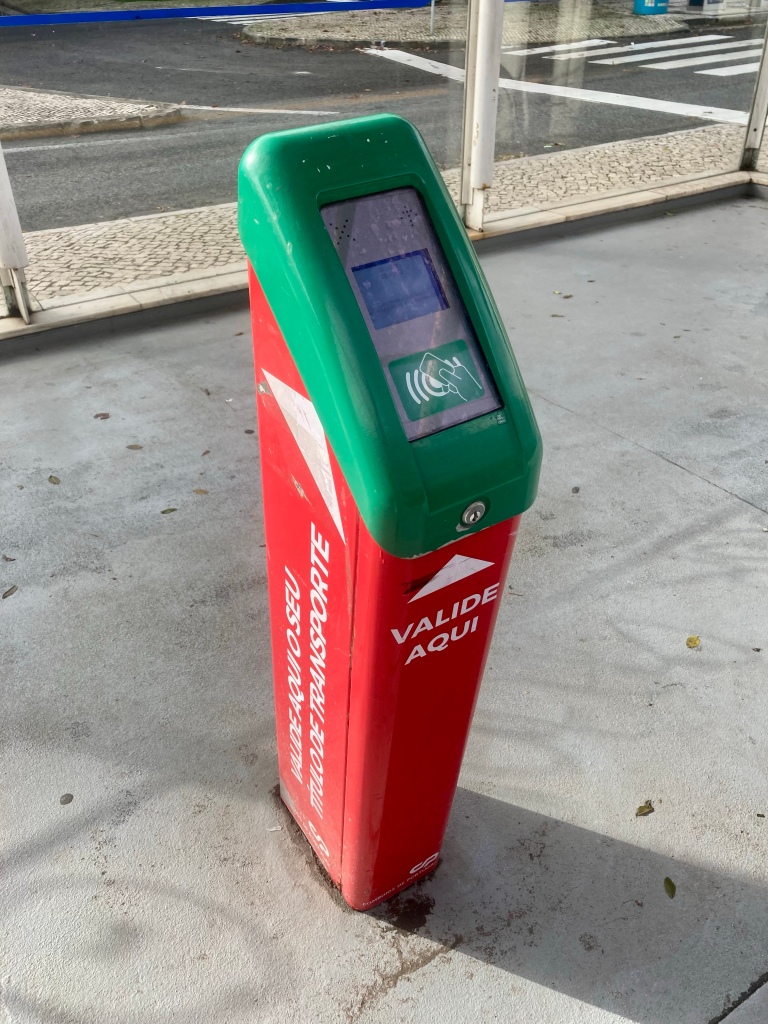
The train itself was a double decker, still a novelty for us even though we’ve been on them quite a few times now in different countries. It takes just under an hour to get to Setúbal and includes crossing the famous bridge the Ponte 25 de Abril.


Once in Setúbal it is an easy walk to the central area, which includes the very nice Praça do Bocage, a square lined with restaurants and cafés. Many were advertising the local speciality of Moscatel, a sweet fortified wine that quite coincidentally we had tried at a meal with family the night before. I rarely drink but did have a small glass and can confirm that it is delicious.

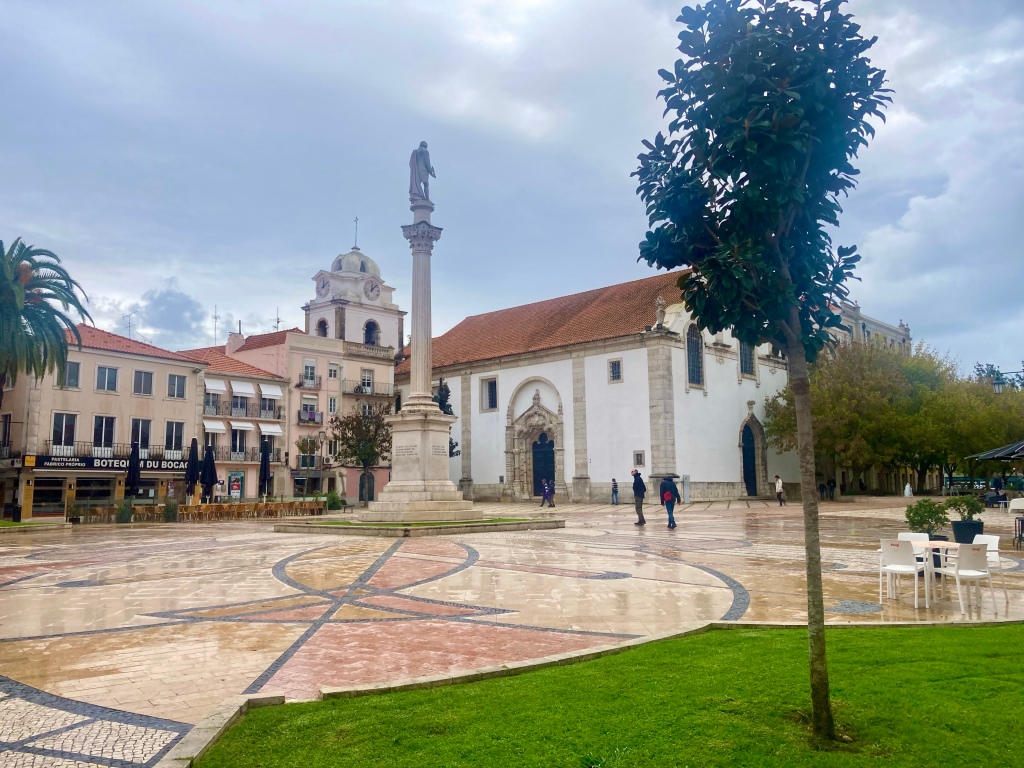
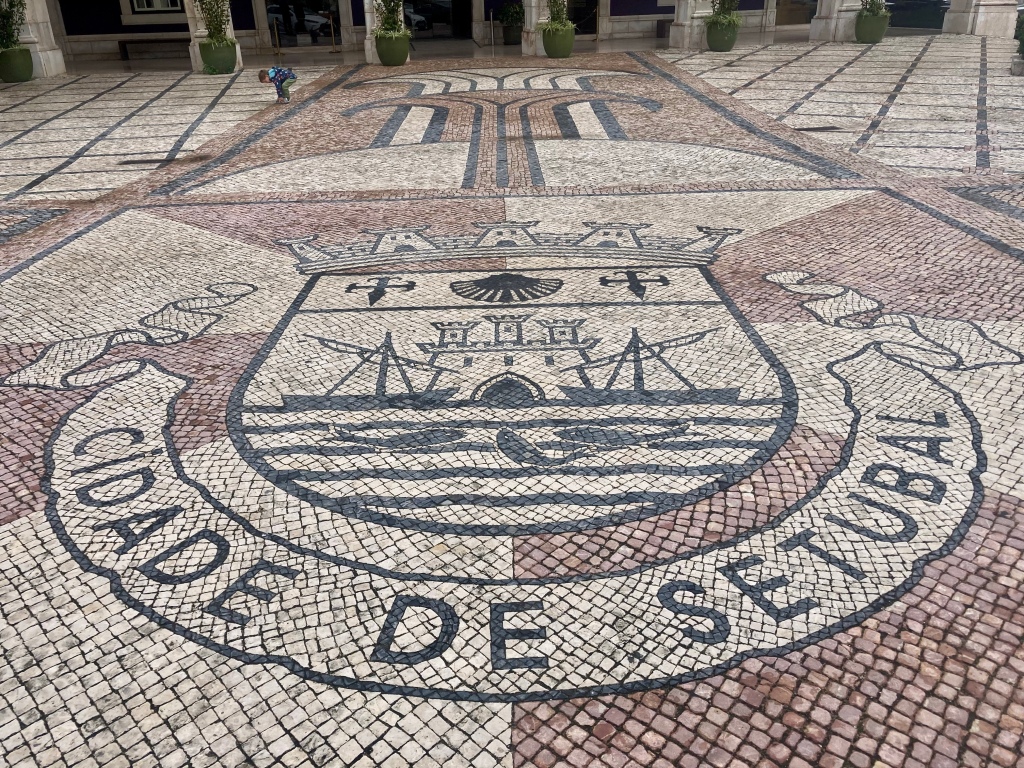
We then headed to the Mercado do Livramento, a large market selling mainly fresh produce, which has one wall decorated with the famous blue and white “azulejos” tiles. There was a lot of activity with camera crews in the market as filming for Masterchef was taking place, this added some excitement and we had to be careful not to trip on the many cables trailing around the floor.

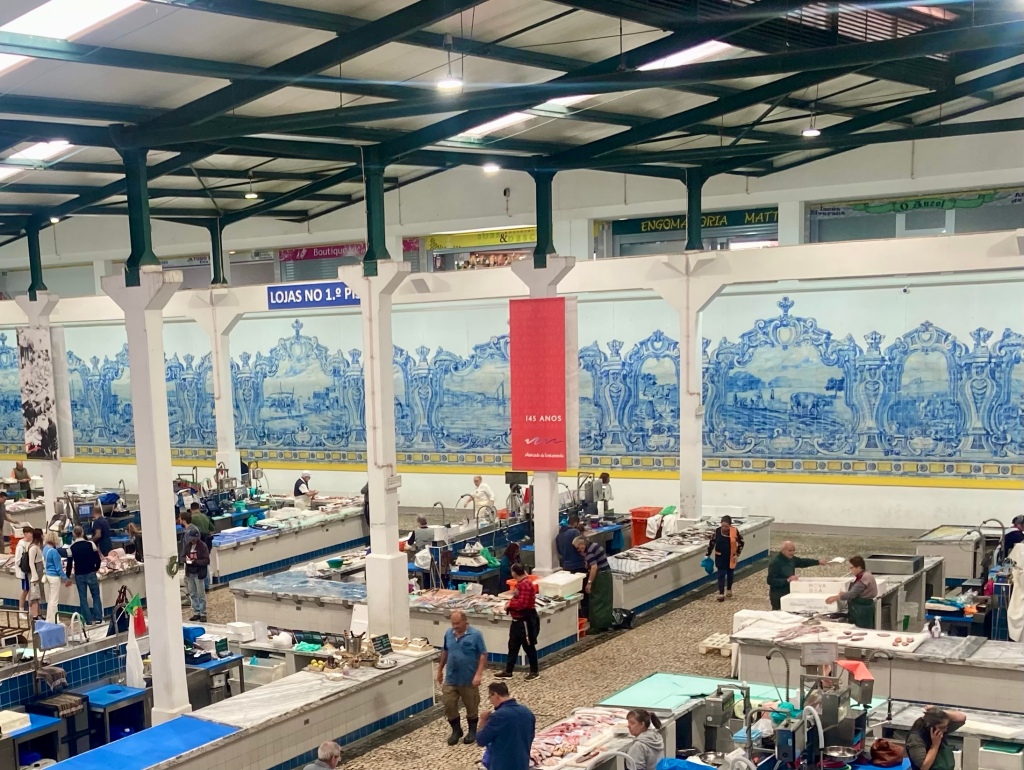


Just along the road from the market was a visitor centre called the Casa da Baía Setúbal, this included an exhibition about dolphins and a shop selling local delicacies. Dolphins live in the nearby Sado estuary and there are plenty of boat tours available, not something that would have been suitable during our trip though as it was extremely windy and raining!

Whilst Setúbal is known for its sea-related activities, we only had a very brief walk along by the harbour as it was blowing a gale! It was enough to get a good feel for the importance of the fishing industry to this area, and there were some eateries advertising the popular “chocos fritos”, which is fried cuttlefish and chips.


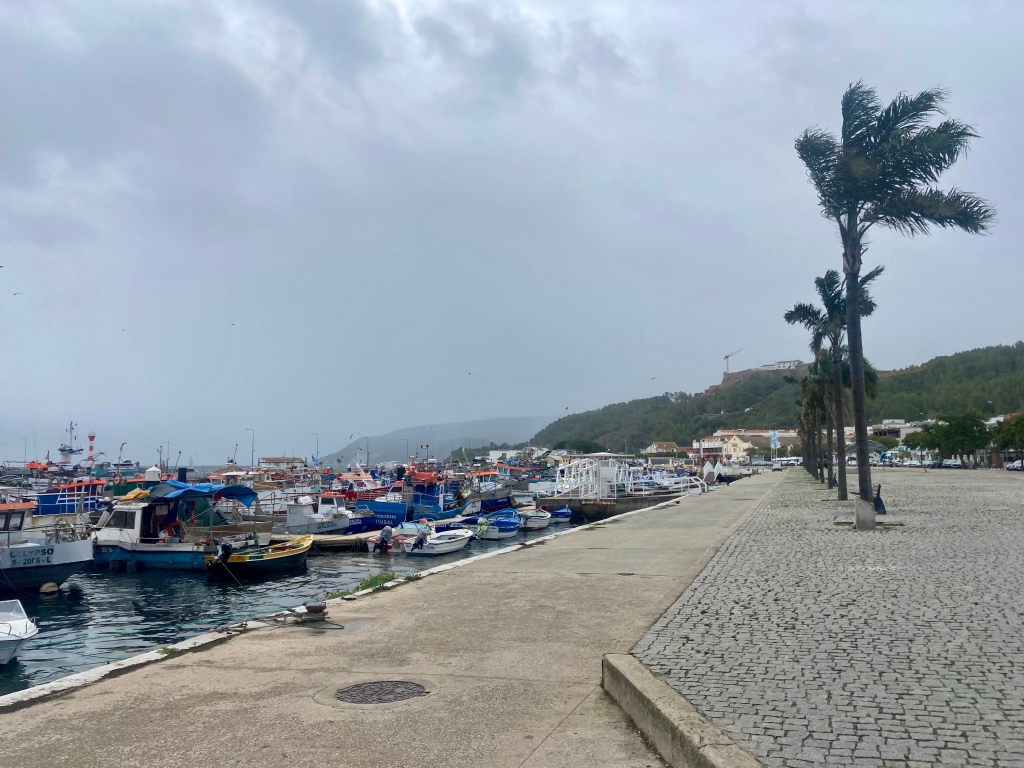
There were some interesting buildings and street art dotted around the centre, and as it’s quite compact it’s easy to see a lot in a short space of time.

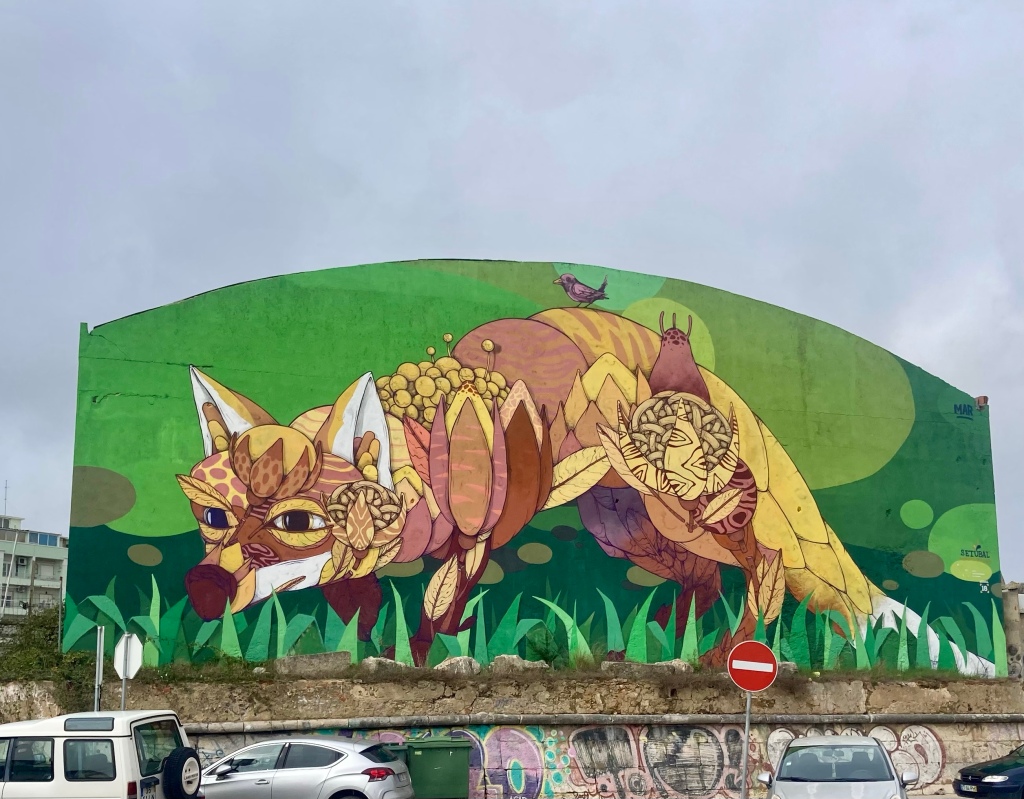

Although we did get a good idea of what Setúbal has to offer, I think it is somewhere that is better appreciated in the summer months. It was actually quite mild when we visited, but the wind and rain, combined with some places only opening on a seasonal basis, means it was extremely quiet and perhaps didn’t have the same atmosphere it would have in the height of the season. It is definitely worth visiting though as an interesting option for a day out from Lisbon.

